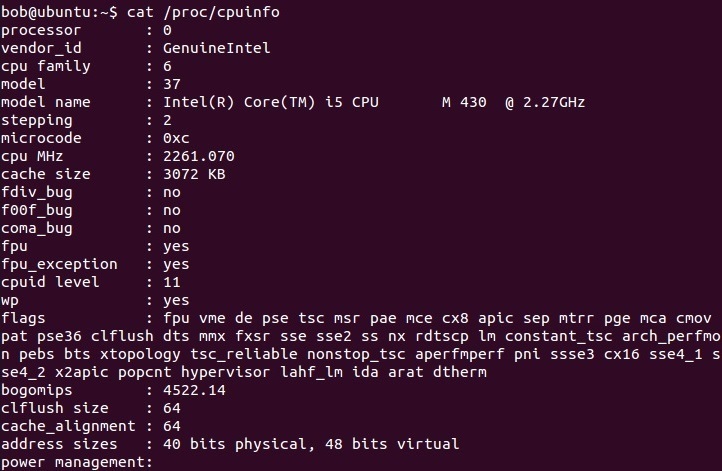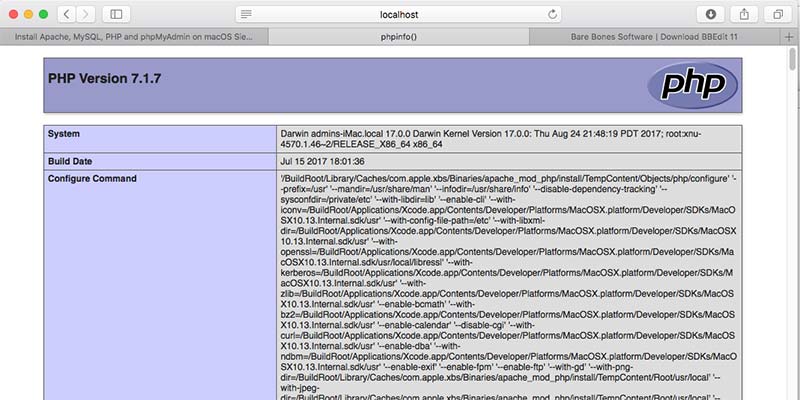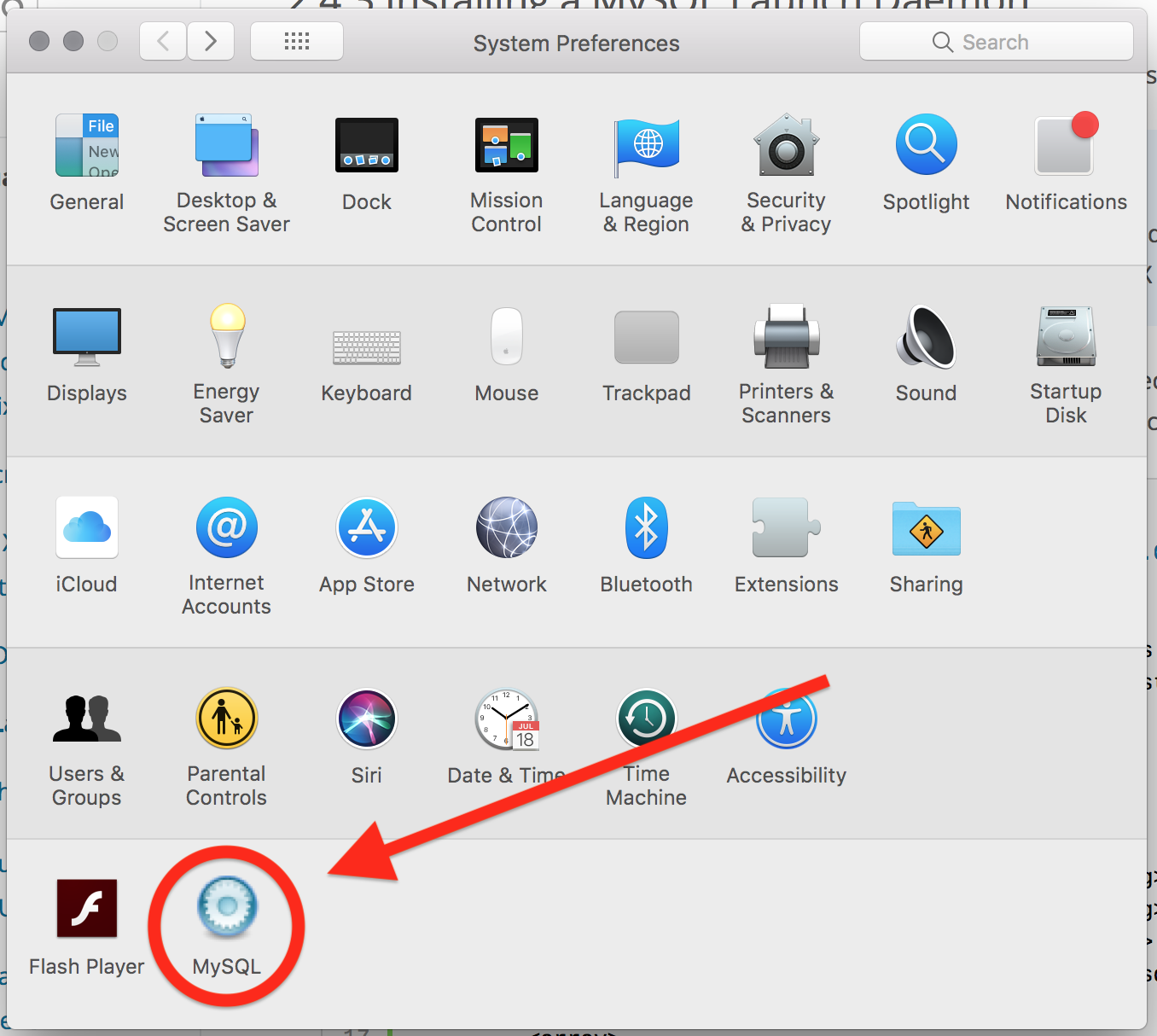- Macos Install Mysql Command Line Download
- Macos Install Mysql Command Line Tutorial
- Macos Install Mysql Command Line Client
- Macos Install Mysql Command Line Syntax
- Mysql Command Line Download
- Macos Install Mysql Command Line Linux
Since macOS is based on Unix there are a number of ways to compress files and folders within the filing system using Unix based application code, below are a few options using the Terminal or command line interface (cli). The default command line application interface in macOS is the Terminal and is stored in /Applications/Utilities.
For MySQL 8.0 on Windows, the default installation directory is C: Program Files MySQL MySQL Server 8.0 for installations performed with MySQL Installer. If you use the ZIP archive method to install MySQL, you may prefer to install in C: mysql. However, the layout of the subdirectories remains the same.
- Jul 22, 2020 MySQL is a free to use Database Management System (RDBMS) that uses Structured Query Language (SQL). MySQL is designed to be stable, reliable, and flexible to use. We’ll use the available MySQL APT repository to install MySQL 8.0 on Kali Linux. Ensure this repository is added to your system by running the command below.
- For MySQL 8.0 on Windows, the default installation directory is C: Program Files MySQL MySQL Server 8.0 for installations performed with MySQL Installer. If you use the ZIP archive method to install MySQL, you may prefer to install in C: mysql. However, the layout of the subdirectories remains the same.
File and folder compression saves on file size and ensures the contents are captured and delivered or stored as one monolithic file. A compressed file which contains files and folders is generally referred to as an archive. Here are some built-in compression applications you can use including zip, tar, gz, bz2, gz and dmg.
ZIP – Cross Platform
First up is ZIP one of the most commonly used compression techniques used across all platforms
To compress
To extract
If you want to make a zip without those invisible Mac resource files such as “_MACOSX” or “._Filename” and .ds store files, use the “-X” option in the command so:
TAR.GZ – Cross Platform
Second up is TAR, an old favorite on Unix/Linux – you add the GZ for the compression – compresses tighter than zip
To compress
To extract
TAR.BZ2 – Cross Platform

A variation on TAR GZ but with better compression than both tar.gz and zip.

To compress
To extract
GZ
Without the tar
Macos Install Mysql Command Line Download
To extract
DMG – macOS Only
This one is macOSnative only – for a GUI interface use /Applications/Utilities/Disk Utility – for command line use:
To create
To mount
To view
To Eject
You can also use a number of different formats for creating a .dmg
- UDZO – Compressed image (default)
- UDRO – Read-only image
- UDBZ – Better compressed image
- UDRW – Read/Write image
- UDTO – DVD disk image
That’s the low down, the more common compression packages available will typically be covered in one of the above.
Troubleshooting¶

If you can’t find the solution to your problem here then participate in thecommunity! You can:
- Join the
#geodjangoIRC channel on Freenode. Please be patient and polite– while you may not get an immediate response, someone will attempt to answeryour question as soon as they see it. - Ask your question on the GeoDjango mailing list.
- File a ticket on the Django trac if you think there’s a bug. Makesure to provide a complete description of the problem, versions used,and specify the component as “GIS”.
Macos Install Mysql Command Line Tutorial
Library environment settings¶
By far, the most common problem when installing GeoDjango is that theexternal shared libraries (e.g., for GEOS and GDAL) cannot be located. [1]Typically, the cause of this problem is that the operating system isn’t awareof the directory where the libraries built from source were installed.
In general, the library path may be set on a per-user basis by settingan environment variable, or by configuring the library path for the entiresystem.
LD_LIBRARY_PATH environment variable¶
Macos Install Mysql Command Line Client
A user may set this environment variable to customize the library pathsthey want to use. The typical library directory for softwarebuilt from source is /usr/local/lib. Thus, /usr/local/lib needsto be included in the LD_LIBRARY_PATH variable. For example, the usercould place the following in their bash profile:
Setting system library path¶
Macos Install Mysql Command Line Syntax
On GNU/Linux systems, there is typically a file in /etc/ld.so.conf, which may includeadditional paths from files in another directory, such as /etc/ld.so.conf.d.As the root user, add the custom library path (like /usr/local/lib) on anew line in ld.so.conf. This is one example of how to do so:
For OpenSolaris users, the system library path may be modified using thecrle utility. Run crle with no options to see the current configurationand use crle-l to set with the new library path. Be very careful whenmodifying the system library path:
Install binutils¶
Mysql Command Line Download
GeoDjango uses the find_library function (from the ctypes.util Pythonmodule) to discover libraries. The find_library routine uses a programcalled objdump (part of the binutils package) to verify a sharedlibrary on GNU/Linux systems. Thus, if binutils is not installed on yourLinux system then Python’s ctypes may not be able to find your library even ifyour library path is set correctly and geospatial libraries were built perfectly.
The binutils package may be installed on Debian and Ubuntu systems using thefollowing command:
Macos Install Mysql Command Line Linux
Similarly, on Red Hat and CentOS systems:
